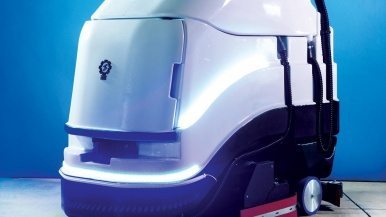Eight wearable gadgets from Toronto tech companies

The Jumpsuit
Athos’s shirts and shorts are equipped with integrated sensors that use electromyography to read the data generated by muscles. The sensors send the information to an app that can tell users which muscles they’re using, whether their workout is symmetrical, and how hard they’re flexing, allowing them to make real-time adjustments to their regimens. The co-founders—Waterloo alums Dhananja Jayalath and Christopher Wiebe—landed on Forbes’ 30 Under 30 list last year.

The Smart Watch
Pebble, from University of Waterloo alum Eric Migicovsky, proves that even smart watches can be sexy. It comes in five styles, the loveliest of which is the Time Round, a round-faced wrist piece that could be mistaken for a classic analog watch. It has a built-in health tracker, microphone and quick-charge battery, and can access 10,000 apps. The company is also about to roll out the Core, a screenless, 3G, clip-on device with GPS and Spotify that’s created with runners in mind.

The Super-Specs
In early 2015, a video of a legally blind woman in Guelph seeing her newborn son for the first time went viral. She was wearing a pair of glasses from eSight. The devices are designed to help people with low vision: two tiny cameras are embedded in the frames, capturing what’s in front of the wearer. Then the live images are processed through software and streamed back to two high-def LED screens in front of the eyes. The result: images of what’s happening, as it’s happening.

The Heart Monitor
Nymi is the first wearable device to identify users by their heartbeat. The possibilities are endless: it allows people to securely connect to computers, mobile devices and smart office technology, and may one day sync with driverless cars. The company has no immediate plans to release its wristbands to consumers, but it’s partnering with companies like MasterCard, a Nymi investor, which is developing a way to complete credit transactions by heartbeat.

The Bling
The Ear-O-Smart, designed by University of Windsor industrial engineering graduate Ravinder Saini, monitors calories burned, activity level and heart rate, and connects to users’ phones through Bluetooth so they can catalogue their personal stats. What sets the Ear-O-Smart apart from an iPhone health monitor is its sly functionality: it packs all that software into an earring back, which can be affixed to even the smallest pair of diamond studs.

The Zen Machine
The city’s most chilled-out gadget is the Muse headband, designed by fashion-world veteran and InterAxon founder Ariel Garten to help people meditate. The Star Trek–ish headset is equipped with seven electroencephalography (EEG) sensors that measure your brainwaves and monitor your precise levels of Zen. That data is transmitted to an app, which offers mindfulness exercises and translates your brain activity into calming ocean, rainforest o thunderstorm sounds.

The Secret Weapon
Kiwi doesn’t make its own wearable devices—instead, it creates motion-sensing software that clips onto your clothing, and measures speed, repetition and velocity. Athletes (and their coaches) can also attach Kiwi-enabled devices to their uniforms, hockey sticks or tennis racquets, and use the technology to review their performance and improve form and reaction time; personal trainers and physiotherapists can use it to monitor their clients’ progress.

The Music Box
The SoMo computerized wristband was developed at OCAD’s Social Body lab, an offshoot of the school’s wearable tech program. A dancer wears it on her hand or foot, and the embedded software creates an ambient soundscape in sync with her movements. Ballet Jörgen took the device for a test drive during an innovative, experimental performance at Digifest, promising audience members that they’d be able not only to see every plié, but hear it, too.










